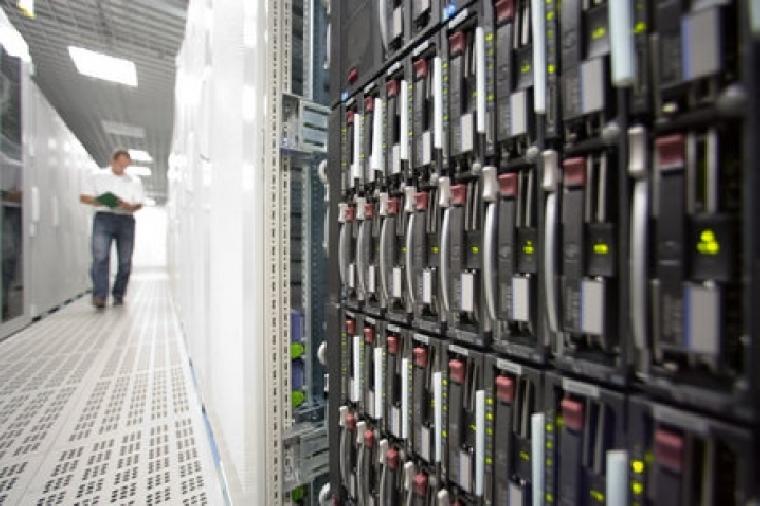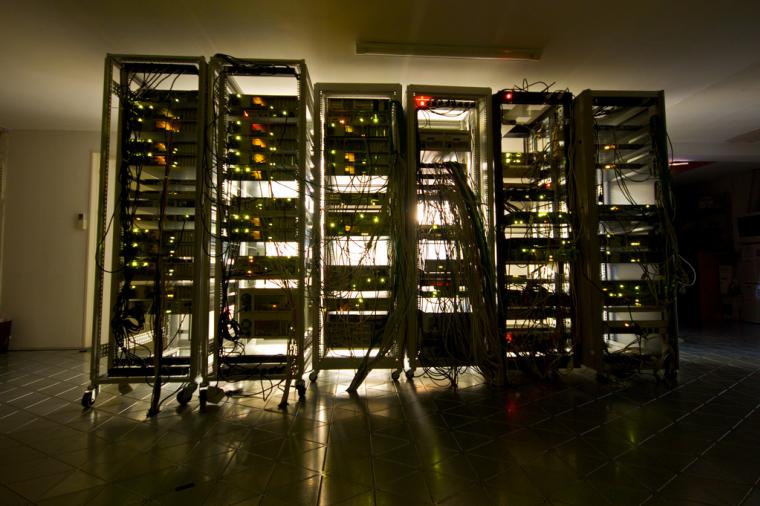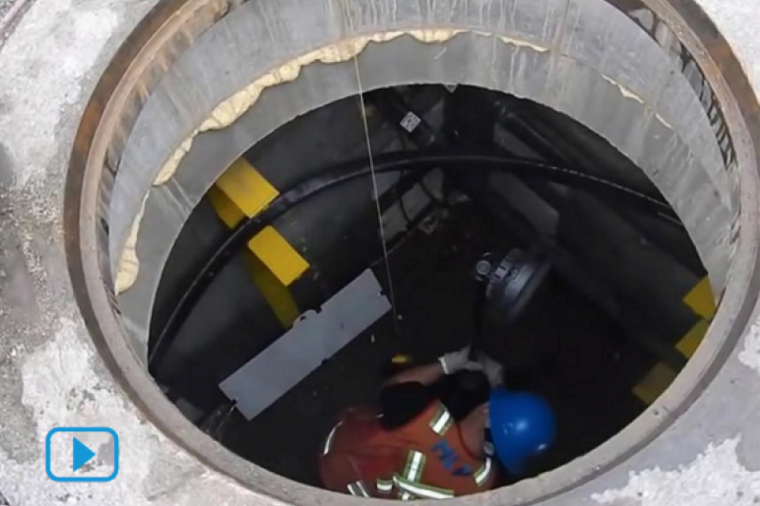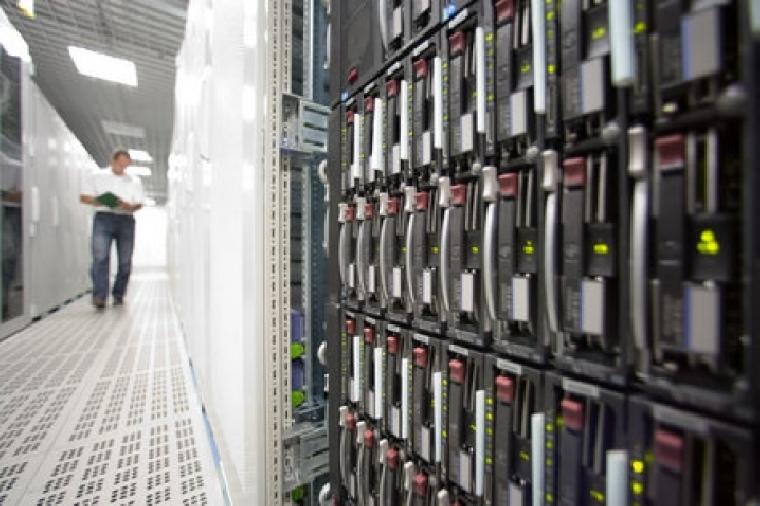
When it comes to
disaster recovery, there has historically been a limitation on disk storage. While tapes can easily be sent offsite to be used for restores after a site outage, disks do not offer the same flexibility.
Some OpenStorage technologies, support out-of-band replication in which the contents of the disk storage are replicated between devices. In these instances, NetBackup has no knowledge of the data, which complicates recovery in a NetBackup protected environment because the replicated data can only be accessed after recreating the NetBackup catalog. Replication is done by importing the entire contents of the disk storage at the remote site using the
bpimport command. The
nbcatsync utility, introduced in NetBackup 6.5.6 and 7.0.1, can address this challenge as well, but it relies on being able to restore the catalog from a catalog backup and then post-processing it to reconcile the disk device mappings, resulting in a very time consuming process.
Fresh AIR
Recently
Symantec introduced Auto Image Replication (AIR) in
NetBackup 7.1. The use of Storage Lifecycle Policies (SLP) and optimized duplication between disk pools allows disk-based backups to be replicated between devices under NetBackup control. Prior to 7.1, this process had been limited to the NetBackup master server from which they originated. With NetBackup 7.1, site-to-site disaster recovery --whether the site is two rooms in the same data center or separate data centers across the country -- can now be done using two separate masters with an automatic process once the SLP has been configured.
 AIR in Action
AIR in Action
In order to use AIR, suitable disk storage devices must be configured in the source and target domains. In the NetBackup 7.1 release, the AIR feature only supports the Media Server Deduplication Pool (MSDP) to duplicate backups between domains. When storage vendors update their plug-ins to the Open Storage API, this capability will extend to those appliances.
AIR works by duplicating backups from a disk pool in the source domain to a disk pool in the target domain. The replication operation requires two SLPs, one in the source domain and one in the target domain, of which both must have the same name. The SLP in the source domain is associated with the backup policy and controls the writing of backup and the subsequent duplication to the target domain. The SLP in the target domain is not associated with a backup policy but is invoked by an alerting mechanism when a new image --duplicated from the source domain -- is detected. This SLP runs the process to add the information about the backup to the target domain and can also be configured to duplicate the backup to other storage locations in the target domain.
An AIR backup image is different from a normal NetBackup backup image. Once the backup has completed, the associated image database information (the part of the NetBackup catalog that lists what the backup actually contains) is appended to the end of the backup image before it is duplicated to the target domain. When a new backup is detected in the target domain, this information is read from the backup and used to populate the target domain’s NetBackup catalog. This information only exists in the source domain copies and the initial copy in the target domain and is not included in any subsequent duplicate copies created in the target domain.
To understand this process, reference the diagram below:

The figure shows the sequence of events in an AIR backup with the duplication operation broken down into four discrete steps:
- Step 1: The backup is written to disk storage in the source domain using a backup policy with an SLP configured for AIR. When the backup completes the catalog, the data it generates is appended to the end of the backup.
- Step 2: The backup is duplicated to the target domain across the WAN (or LAN).
- Step 3: The storage device in the target domain alerts the target master server to the fact that a backup has been duplicated to it. This triggers the receiving SLP to run a “fast import” operation in which the catalog data transferred from the source domain is added to the target domain’s catalog.
- Step 4: The receiving SLP in the target domain can now duplicate the received backup to any desired location for storage – such as creating a tape for long term retention.
Photos courtesy of
TreeHugger.com and
42U.com
 When it comes to disaster recovery, there has historically been a limitation on disk storage. While tapes can easily be sent offsite to be used for restores after a site outage, disks do not offer the same flexibility.
Some OpenStorage technologies, support out-of-band replication in which the contents of the disk storage are replicated between devices. In these instances, NetBackup has no knowledge of the data, which complicates recovery in a NetBackup protected environment because the replicated data can only be accessed after recreating the NetBackup catalog. Replication is done by importing the entire contents of the disk storage at the remote site using the bpimport command. The nbcatsync utility, introduced in NetBackup 6.5.6 and 7.0.1, can address this challenge as well, but it relies on being able to restore the catalog from a catalog backup and then post-processing it to reconcile the disk device mappings, resulting in a very time consuming process.
Fresh AIR
Recently Symantec introduced Auto Image Replication (AIR) in NetBackup 7.1. The use of Storage Lifecycle Policies (SLP) and optimized duplication between disk pools allows disk-based backups to be replicated between devices under NetBackup control. Prior to 7.1, this process had been limited to the NetBackup master server from which they originated. With NetBackup 7.1, site-to-site disaster recovery --whether the site is two rooms in the same data center or separate data centers across the country -- can now be done using two separate masters with an automatic process once the SLP has been configured.
When it comes to disaster recovery, there has historically been a limitation on disk storage. While tapes can easily be sent offsite to be used for restores after a site outage, disks do not offer the same flexibility.
Some OpenStorage technologies, support out-of-band replication in which the contents of the disk storage are replicated between devices. In these instances, NetBackup has no knowledge of the data, which complicates recovery in a NetBackup protected environment because the replicated data can only be accessed after recreating the NetBackup catalog. Replication is done by importing the entire contents of the disk storage at the remote site using the bpimport command. The nbcatsync utility, introduced in NetBackup 6.5.6 and 7.0.1, can address this challenge as well, but it relies on being able to restore the catalog from a catalog backup and then post-processing it to reconcile the disk device mappings, resulting in a very time consuming process.
Fresh AIR
Recently Symantec introduced Auto Image Replication (AIR) in NetBackup 7.1. The use of Storage Lifecycle Policies (SLP) and optimized duplication between disk pools allows disk-based backups to be replicated between devices under NetBackup control. Prior to 7.1, this process had been limited to the NetBackup master server from which they originated. With NetBackup 7.1, site-to-site disaster recovery --whether the site is two rooms in the same data center or separate data centers across the country -- can now be done using two separate masters with an automatic process once the SLP has been configured.
 AIR in Action
In order to use AIR, suitable disk storage devices must be configured in the source and target domains. In the NetBackup 7.1 release, the AIR feature only supports the Media Server Deduplication Pool (MSDP) to duplicate backups between domains. When storage vendors update their plug-ins to the Open Storage API, this capability will extend to those appliances.
AIR works by duplicating backups from a disk pool in the source domain to a disk pool in the target domain. The replication operation requires two SLPs, one in the source domain and one in the target domain, of which both must have the same name. The SLP in the source domain is associated with the backup policy and controls the writing of backup and the subsequent duplication to the target domain. The SLP in the target domain is not associated with a backup policy but is invoked by an alerting mechanism when a new image --duplicated from the source domain -- is detected. This SLP runs the process to add the information about the backup to the target domain and can also be configured to duplicate the backup to other storage locations in the target domain.
An AIR backup image is different from a normal NetBackup backup image. Once the backup has completed, the associated image database information (the part of the NetBackup catalog that lists what the backup actually contains) is appended to the end of the backup image before it is duplicated to the target domain. When a new backup is detected in the target domain, this information is read from the backup and used to populate the target domain’s NetBackup catalog. This information only exists in the source domain copies and the initial copy in the target domain and is not included in any subsequent duplicate copies created in the target domain.
To understand this process, reference the diagram below:
AIR in Action
In order to use AIR, suitable disk storage devices must be configured in the source and target domains. In the NetBackup 7.1 release, the AIR feature only supports the Media Server Deduplication Pool (MSDP) to duplicate backups between domains. When storage vendors update their plug-ins to the Open Storage API, this capability will extend to those appliances.
AIR works by duplicating backups from a disk pool in the source domain to a disk pool in the target domain. The replication operation requires two SLPs, one in the source domain and one in the target domain, of which both must have the same name. The SLP in the source domain is associated with the backup policy and controls the writing of backup and the subsequent duplication to the target domain. The SLP in the target domain is not associated with a backup policy but is invoked by an alerting mechanism when a new image --duplicated from the source domain -- is detected. This SLP runs the process to add the information about the backup to the target domain and can also be configured to duplicate the backup to other storage locations in the target domain.
An AIR backup image is different from a normal NetBackup backup image. Once the backup has completed, the associated image database information (the part of the NetBackup catalog that lists what the backup actually contains) is appended to the end of the backup image before it is duplicated to the target domain. When a new backup is detected in the target domain, this information is read from the backup and used to populate the target domain’s NetBackup catalog. This information only exists in the source domain copies and the initial copy in the target domain and is not included in any subsequent duplicate copies created in the target domain.
To understand this process, reference the diagram below:
 The figure shows the sequence of events in an AIR backup with the duplication operation broken down into four discrete steps:
The figure shows the sequence of events in an AIR backup with the duplication operation broken down into four discrete steps:








































